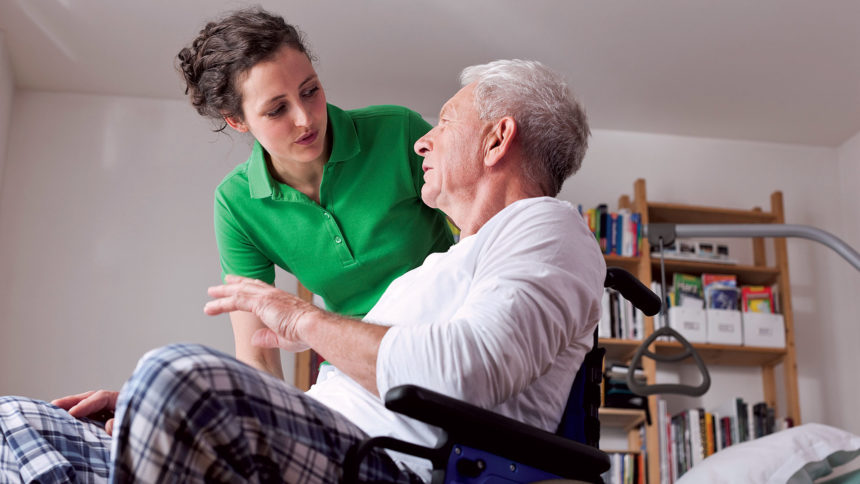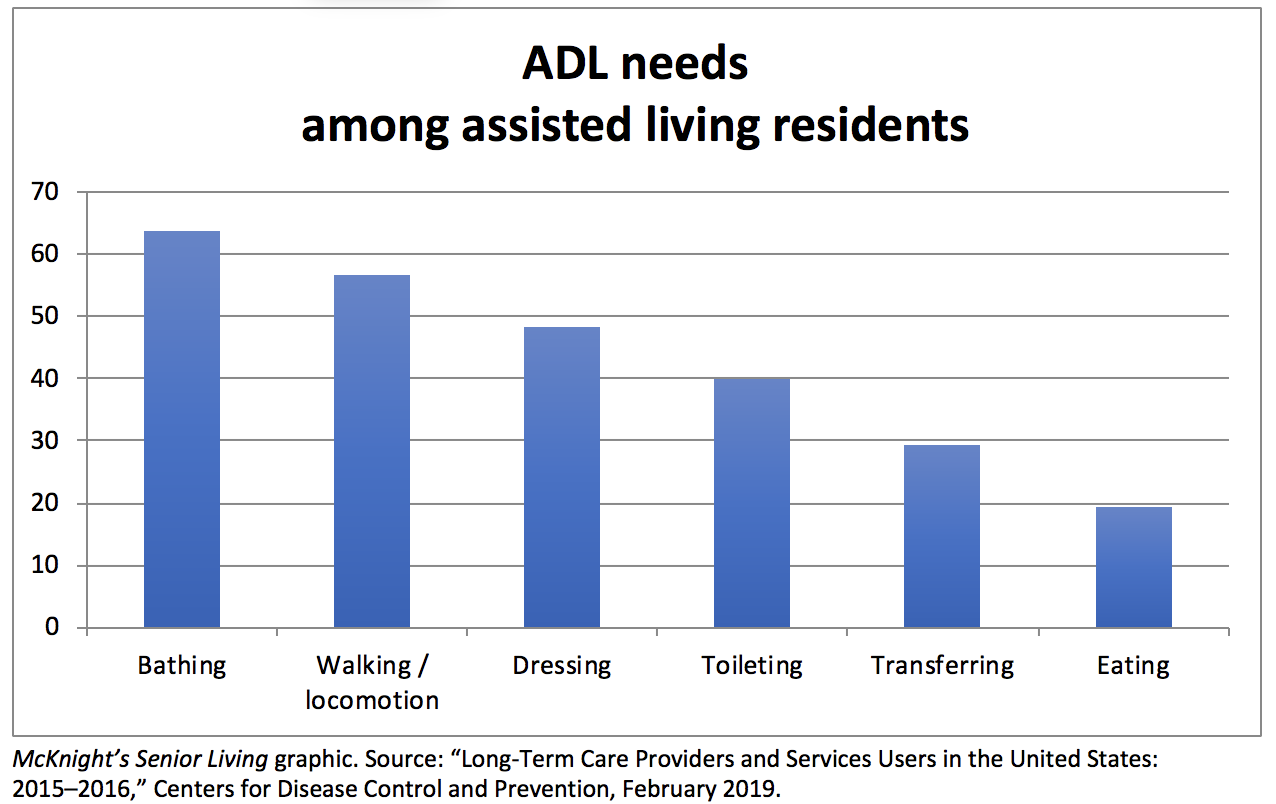
Bathing is the most common activity of daily living with which residents of assisted living or similar residential communities need help, according to a new report from the Centers for Disease Control and Prevention’s National Center for Health Statistics. The report sheds light on the characteristics of the 28,900 residents in such communities who were provided long-term care services as of 2016.
“Findings on differences and similarities in supply, provision and use, and the characteristics of providers and users of long-term care services, can inform policy and planning to meet the needs of an aging population,” according to the report, titled “Long-Term Care Providers and Services Users in the United States: 2015-2016”(PDF).
Highlights:

ADL assistance. 63.6% of residents of assisted living or similar residential communities needed assistance with bathing, 56.5% needed assistance with walking or locomotion, 48.2% needed help with dressing, 40% needed assistance with toileting. 29.2% needed help transferring in and out of bed, and 19.2% needed help eating.
Age. 52.1% of residents were aged 85 or more years, 30.3% were aged 75 to 84 years, 11% were aged 65 to 74 years and 6.6% were aged fewer than 65 years.
Gender. 70.6% of residents were women, and 29.4% were men.
Race. 81.4% of residents were non-Hispanic whites, 4.1% were non-Hispanic blacks, 3.1% were Hispanic and 11.5% were “non-Hispanic other.”
Medicaid. 16.5% of residents were Medicaid beneficiaries.
Diagnoses. Hypertension: 51.2% of residents; arthritis: 42.4%, Alzheimer’s / dementia: 41.9%, heart disease: 34.3%, depression: 30.9%, osteoporosis: 23.7%, diabetes: 18.1%, chronic obstructive pulmonary disease: 14%, chronic kidney disease: 8.3%, asthma: 6.8%.
Falls. More residential care residents (21.4%) had falls compared with adult day participants and nursing home residents (7.8% and 16.1%, respectively).
Hospital visits / stays. 14.2% of residents had emergency department visits, and 8.3% had overnight hospital stays, within the past year.
The report details the current national picture of providers and users of services in five major sectors. In addition to assisted living, the sectors include adult day service centers, home health agencies, hospice and nursing homes. This the third descriptive overview report that the NCHS has issued monitoring national and state trends. The previous report was issued three years ago.



